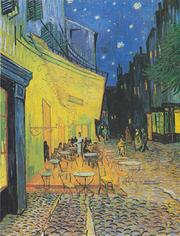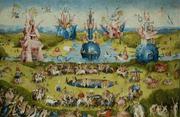Stonehenge Meaning: Theories, History & Facts About Stonehenge
BY K Shabi PUBLISHED 20 Nov 2014
What is the meaning of Stonehenge? This circle of stacked rocks has baffled and mystified historians and antiquarians for thousands of years, but the true purpose and meaning of Stonehenge still remains shrouded in mystery even today. While there are many theories and myths about the history of Stonehenge, set in stone facts about this ancient structure are much harder to come by.

Stonehenge Location: Where and What is Stonehenge?
Where is Stonehenge? It's hard to believe that a prehistoric monument built around the same time as the Great Pyramid in Egypt is located less than 100 miles from London in the grassy hills and farmlands of Wiltshire, England in the United Kingdom. What is Stonehenge? While its purpose and meaning are widely debated, at first glance Stonehenge is basically just a bunch of large rocks placed upright in a big circle in the middle of a grassy field. Inside the circle of massive, upright sarsen stones are smaller rocks called bluestones placed in unusual but seemingly strategic patterns.
Who Built Stonehenge? How was Stonehenge Built? Was it Aliens?
Outside of the obvious ring of stones and boulders sprawls even more ancient history and mystery. Historians surmise that Stonehenge was not finished all at one time, but rather that the whole area around Stonehenge was the site of ongoing prehistoric construction and fascination since maybe as early as 8000BC. Contrary to popular belief — and Spinal Tap — modern archeologists do not believe that Stonehenge was built by the Druids, but was actually started long before the Celts arrived in Britain, most likely during the Neolithic period. They may have been from the Stone Age, but historians believe the unknown builders of Stonehenge carefully engineered surprisingly complex and cutting edge systems designed to hew and haul these giant stones into place. Their remarkable ingenuity has even caused some whimsical theorists to wonder if the monument was actually built by advanced extra terrestrial aliens from another civilization altogether.
History: When Was Stonehenge Built? How Old is Stonehenge?
How old is Stonehenge? While archaeologists surmise that the central circle of rocks at Stonehenge was erected between 2500 and 2300BC, outside of the central stone monument is evidence of other, much older developments of a bygone era. There definitely seems to be much more to Stonehenge than just the visible stones. The famous rocks of Stonehenge are enclosed by a large trench or ditch that was dug perhaps 500 years before the large stones were set into place. Further out beyond are scattered several other mysterious burial mounds and postholes, including the Stonehenge Cursus, a much larger earthwork trench that may have been dug as early as 3500BC. So why were the inhabitants of ancient England so captivated by the area of Stonehenge?
Theories & Myths About the Purpose & Meaning of Stonehenge: Ancient Sun Calendar
 Why was Stonehenge built? What is the meaning of Stonehenge? One of the most famous theories about Stonehenge is that it was actually a big, ancient calendar designed to keep track of time and important astronomical events. Some historians believe it is no small coincidence that the sun can be seen rising directly above Stonehenge's outlying Heel Stone (also known as the "Sun-stone") from the center of the circle at the summer solstice. In fact, Stonehenge appears to be in remarkable alignment with the sun during the winter and summer solstices, but scientists continue to debate to what extent these perceived solar alignments really were intended by Stonehenge's builders.
Why was Stonehenge built? What is the meaning of Stonehenge? One of the most famous theories about Stonehenge is that it was actually a big, ancient calendar designed to keep track of time and important astronomical events. Some historians believe it is no small coincidence that the sun can be seen rising directly above Stonehenge's outlying Heel Stone (also known as the "Sun-stone") from the center of the circle at the summer solstice. In fact, Stonehenge appears to be in remarkable alignment with the sun during the winter and summer solstices, but scientists continue to debate to what extent these perceived solar alignments really were intended by Stonehenge's builders.
Magic Bluestones: Stonehenge as a Place of Mystical Healing?
Stonehenge might be a prime location for tracking solar movements, but recent theories suggest that ancient people might have been fascinated by the Stonehenge region for other, more mystical reasons. Archaeologists can trace the origins of the tall sarsen stones that make up Stonehenge's outer circle back to the Marlborough Downs region about 20 miles away, but the smaller bluestones in the inner area of Stonehenge seem to have been transported from a much farther distance, maybe even transported all the way back from the Preseli Mountains in Wales. Why?
Why Was Stonehenge Built?
These ancient people would not have gone to all the trouble of transporting massive boulders such a great distance if they did not believe that the bluestones were special in some way. As some anthropologists point out, precious gemstones and rocks like bluestones have been used for centuries in spiritualism and alternative healing practices, so it may be that the bluestones were brought to Stonehenge specifically for their spiritual, mystical properties. While theories and myths about the healing power of Stonehenge are purely conjectural, archaeologists have unearthed further evidence as recently as 2008 to suggest that Stonehenge may have been viewed as a legendary place of mystical healing that ancient peoples traveled great distances to visit.
Due to the large number of sometimes burned skeletal remains found on site, Stonehenge has long been viewed as a burial grounds, sacrificial temple, or even possibly a cremation cemetery. In recent excavations, however, scientists observed an abnormally large number of bones exhibiting evidence of distinct trauma or deformity, offering more credence to the theory that people traveled from far and wide to Stonehenge in hopes of being healed by the power of the mythically magical bluestones. Geoffrey Wainwright, the president of the Society of Antiquaries of London in charge of these excavations, pointed out that it may have been "the magical qualities of these stones which ... transformed the monument and made it a place of pilgrimage for the sick and injured of the Neolithic world." Was this the true meaning and purpose of Stonehenge?
The Meaning & Mystery of Stonehenge
Stonehenge may very well have been built with a specific purpose in mind, but through nearly 5,000 years of human history its true meaning will probably forever remain a mystery. Whatever its true purpose, it seems certain that there has to be some reason that the Stonehenge landscape has continued to mesmerize generations upon generations, leaving us now only to wonder about what could have happened there so many thousands of years ago. Whether designed for scientific purposes, to track the movement of the sun or as a religious, mystical place of healing and worship, Stonehenge is a distinct historical monument in that it really can accommodate or perhaps even resist any meaning we attempt to ascribe to it.
Quotes About Stonehenge & Its Meaning From the Visitor Center Wall
the far gods home!" Bernard Cornwell







